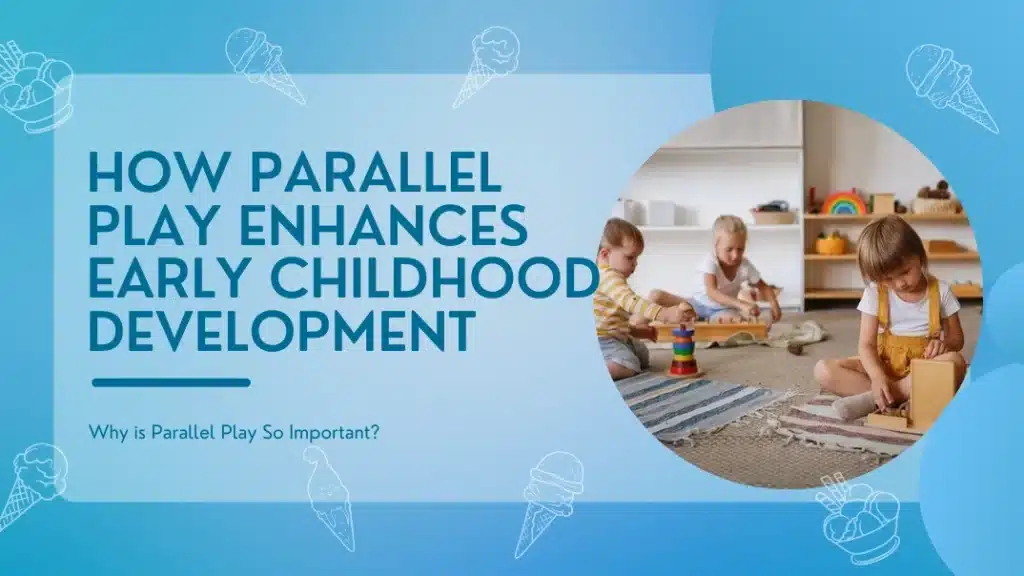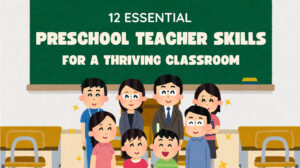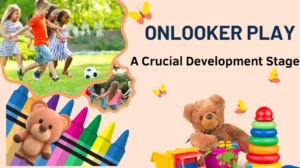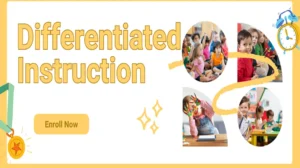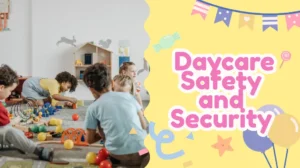Parallel play is one of those vital developmental stages that might seem minor but plays a critical role in a child’s growth. If you’re a parent, teacher, or caregiver, you might have noticed children playing side by side without interacting directly. This behavior is not just coincidental; it is an essential phase of early childhood development that helps set the foundation for more complex social skills later in life. So, what exactly is parallel play, and why is it so crucial for children?
Parallel play refers to the stage when children play alongside each other without directly engaging. This might look like two toddlers building blocks next to each other or playing with dolls in the same space without interacting. Typically occurring between the ages of 2 and 3, parallel play is often mistaken for solitary play because the children seem absorbed in their activities. However, there is a significant difference: while they may appear to be playing alone, they learn by observing and mimicking each other, developing crucial skills that will serve them well as they grow.
This stage is a critical stepping stone in the development of social behaviors. It allows children to become aware of the presence of others and to start understanding the concept of shared space. During parallel play, children learn by watching their peers, which can lead to acquiring new skills and ideas that they might not encounter in solitary play. For example, a child who notices another child stacking blocks in a certain way might attempt to replicate that action, thereby learning through imitation.
Moreover, parallel play lays the groundwork for more interactive and cooperative game forms emerging as the child ages. It is a subtle yet powerful form of learning where the activities of others influence children without direct collaboration. This influence helps them to slowly develop the social skills necessary for future stages of play, such as associative play, where they begin to share and communicate more directly, and cooperative play, where they start working together towards a common goal.
Now that we’ve touched on what parallel play is, let’s dive deeper into its importance, the stages it encompasses, and how it fits into the broader spectrum of early childhood development.

Understanding Parallel Play
Parallel play, known in developmental psychology as parallel play, is a pivotal stage in childhood development where children play next to each other but do not actively attempt to influence one another’s behavior. This concept was introduced by sociologist Mildred Parten in 1932 as part of her influential stages of play theory. According to Parten’s model, parallel play is identified as the fourth stage in the sequence of social development. Children engage in independent activities at this stage yet remain acutely aware of their peers’ presence, sometimes even mirroring their actions or choosing similar toys.
For example, in a daycare setting where multiple toddlers are given the same toys, such as building blocks, each child might use these blocks to create their unique structures. Despite focusing on their projects, they observe the other children’s actions, possibly incorporating elements they see into their play. This scenario, while appearing solitary, is rich with social learning opportunities. The proximity to peers provides an environment where subtle exchanges of ideas and behaviors occur, even without direct interaction.
Parallel play extends beyond simply playing with toys. This behavior can also be observed in artistic activities, where children might be engaged in painting or drawing side by side, each working on their masterpiece but occasionally glancing at what their neighbors are creating. Similarly, children might engage in physical activities like running or climbing in outdoor settings. Each child is independently absorbed in their actions, yet a mutual awareness influences their play decisions.
This stage is more than just a transitional phase; it is the foundation for more complex social interactions that will develop as the child matures. Through parallel play, children understand the nuances of sharing space, observing social norms, and even laying the groundwork for future collaborative activities. This period of development, though often subtle, is crucial for preparing children for the following stages of their social journey, including associative play and cooperative play, where interaction becomes more direct and structured.
Parallel Play Examples
Parallel play can manifest in various ways, providing unique opportunities for children to learn and develop socially. Below are a few common examples of parallel play that can be observed in everyday settings:
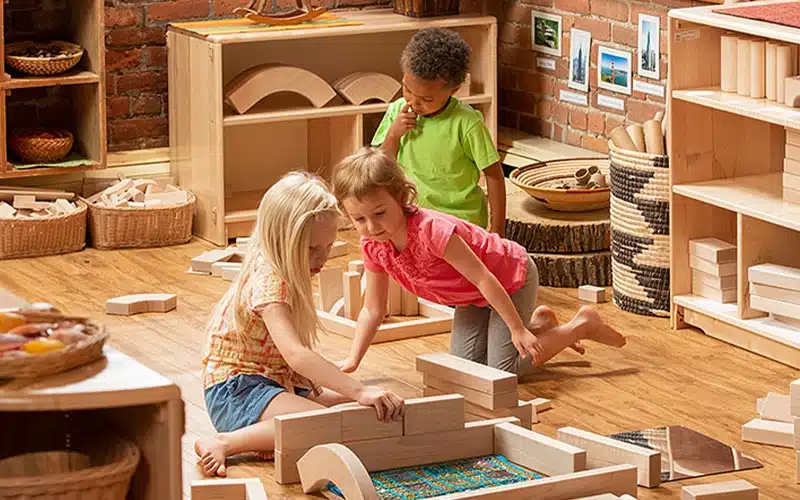
- Building Blocks: Imagine two toddlers sitting side by side, each with their building blocks. While both focused on constructing their towers, they did not interact directly. However, they may glance at each other’s creations, perhaps getting inspired by the design choices of their peer. This form of play allows each child to work independently while still being influenced by the presence and actions of the other.
- Art Activities: Children might be drawing or painting in a classroom setting. Each child is working on their artwork, using their materials, but they are seated next to one another. Occasionally, they might peek at their neighbor’s drawing, perhaps adopting a color choice or technique they observe. This scenario is a classic example of parallel play, where the children are independently creative but are still subtly interacting through observation.


- Sandbox Play: At a playground, it’s common to see children playing in a sandbox, each focused on their own digging or building activities. One child might be building a sandcastle while another is digging a tunnel, both deeply engrossed in their projects. Though they aren’t directly playing together, they are aware of each other’s presence and might even use similar tools or techniques observed from their peer’s actions.
- Pretend Play: Two children might play pretend with different toys in a home or daycare setting. One child could be pretending to cook in a toy kitchen, while another is caring for a doll. Although their activities are separate, they might occasionally observe each other’s actions, which could influence their own pretend scenarios. This type of parallel play allows children to explore imaginative scenarios independently while being in the company of others.
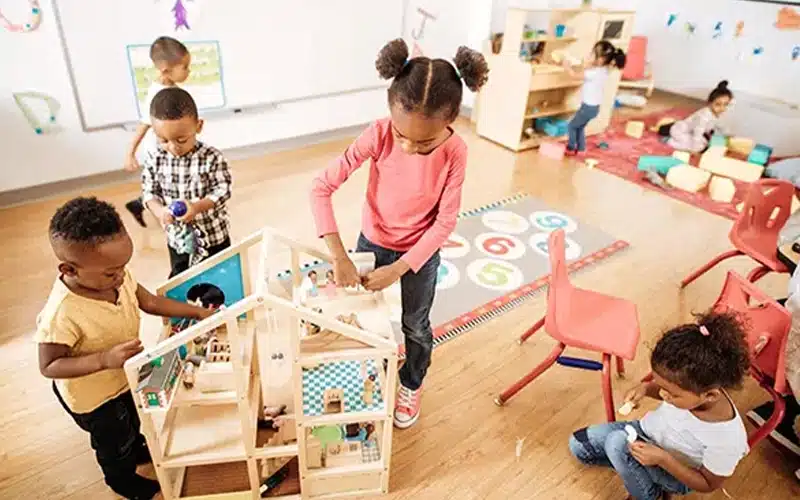

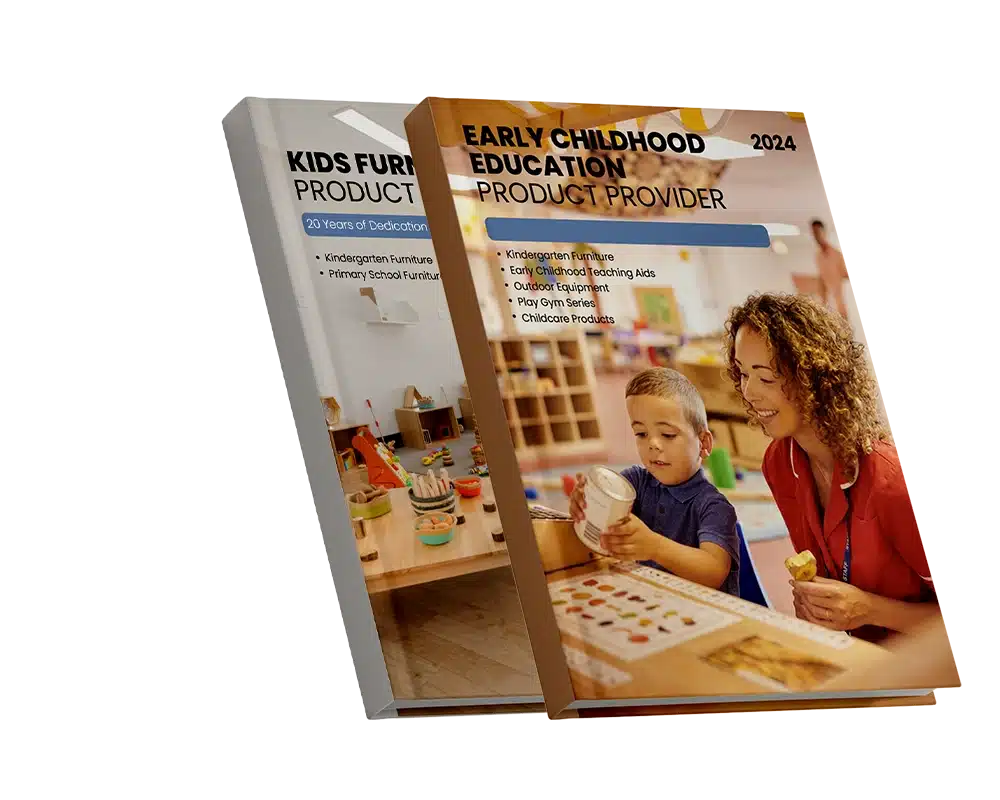
These examples highlight how parallel play occurs naturally in various settings, allowing children to learn and grow socially while still focusing on their activities. By observing and sometimes subtly mimicking their peers, children in parallel play develop critical skills that will serve as the foundation for more complex social interactions in the future.

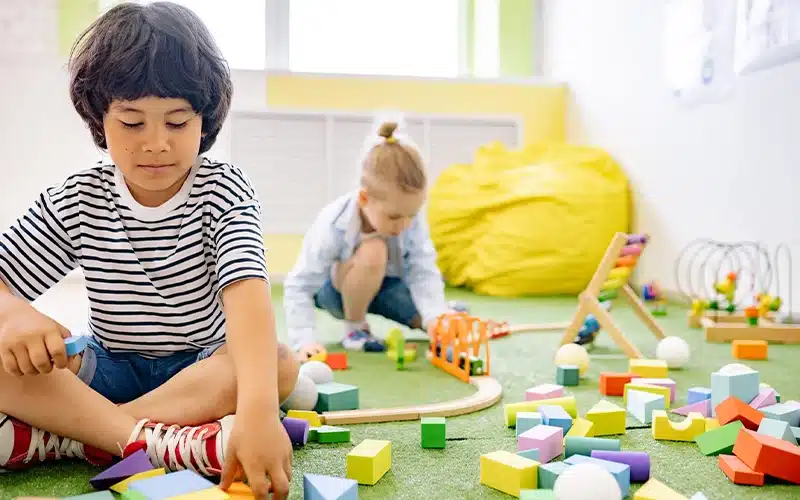
The Critical Role of Parallel Play in Child Development
Parallel play is not merely a phase children go through; it is a cornerstone in their developmental process, providing the foundation for more complex social interactions that will emerge later in life. During this phase, children begin to grasp the concept of coexisting in a shared space with others, even if they are not actively engaging with them. This shared space becomes a dynamic learning environment where children can observe, imitate, and learn from the behaviors and actions of their peers.
The significance of parallel play in early childhood cannot be emphasized enough. Children develop essential social and emotional competencies during this crucial stage as they grow. For instance, being near other children allows them to learn about boundaries, resource sharing, and, eventually, the basics of collaboration. This observational learning is instrumental in shaping their future interactions in more cooperative and interactive forms of play.
In addition to social and emotional development, parallel play is a vital period for cognitive growth. By observing their peers, children are exposed to new ideas, approaches, and problem-solving methods, which they can incorporate into their play. This exposure fosters creativity and innovation, as children learn to experiment with different strategies and solutions through imitation and adaptation.
Moreover, parallel play plays a significant role in language acquisition. Even though children may not speak directly to each other, they constantly listen to the language used by those around them. This passive language learning helps expand their vocabulary, improve their understanding of sentence structure, and enhance their overall communication skills. The language skills developed during this stage are crucial as they form the basis for more advanced linguistic abilities necessary in later stages of development.
Physical development is another area that benefits from parallel play. Whether it involves fine motor skills such as manipulating small objects or gross motor skills like running and climbing, parallel play provides ample opportunities for children to practice and refine these skills within a social context. The presence of peers adds an element of challenge and motivation, encouraging children to push their physical boundaries while observing and sometimes imitating the movements of others.
In summary, parallel play is not just about children playing side by side; it is about them learning to navigate social spaces, develop critical cognitive and language skills, and build the physical coordination necessary for later stages of play. It is a period rich with developmental opportunities that lay the groundwork for more complex social interactions and learning experiences.
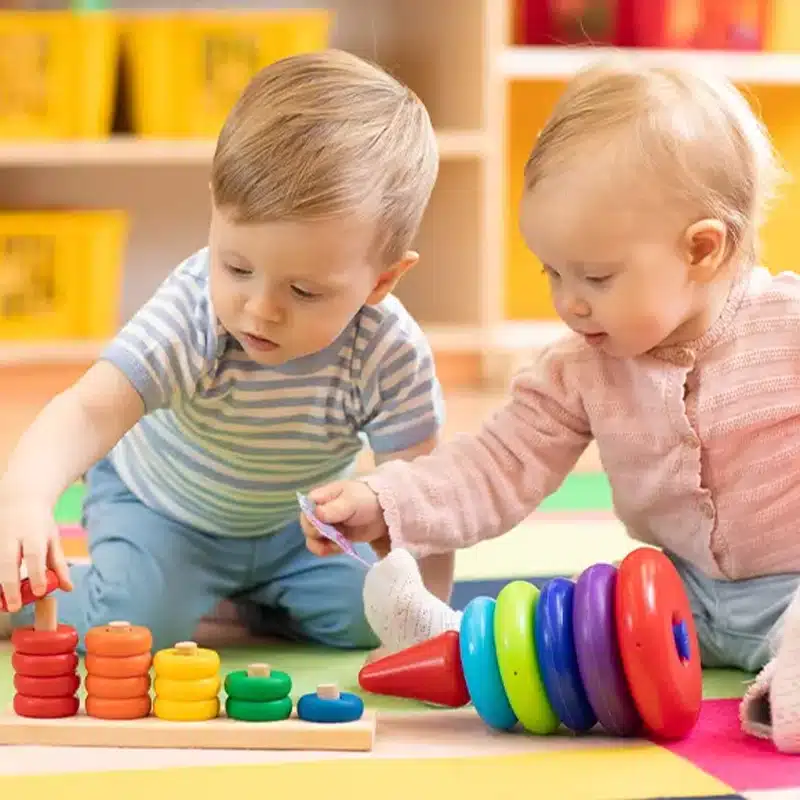
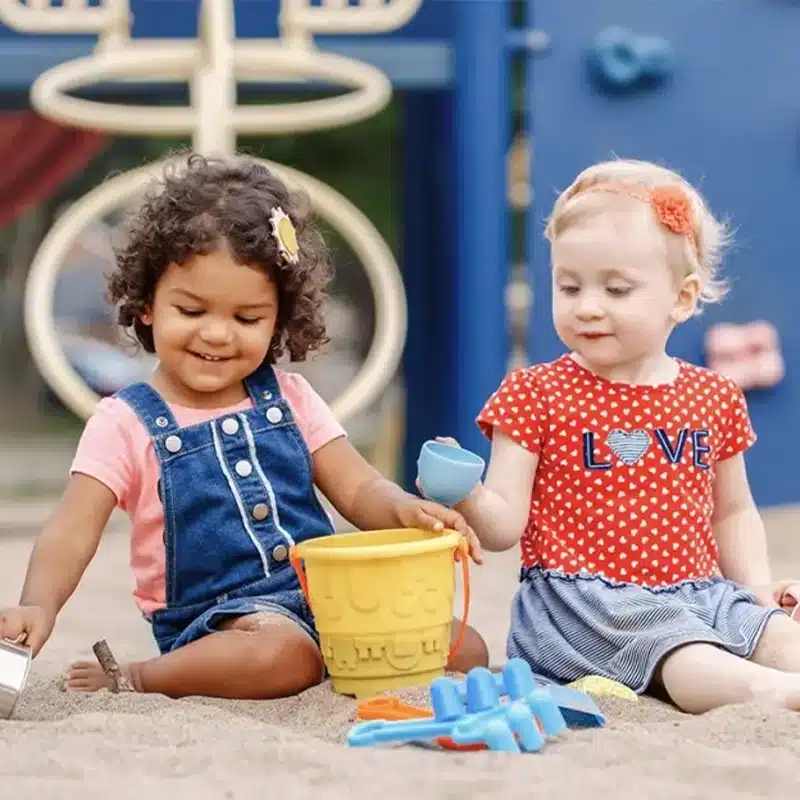
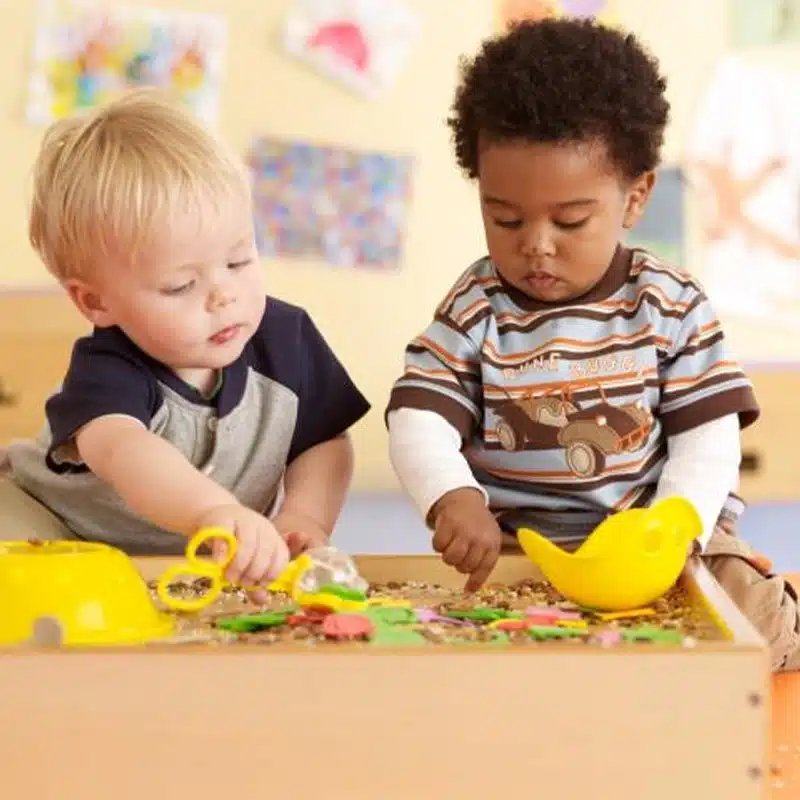
The Timeline of Parallel Play: When Does It Start and End?
Parallel play generally begins around two and continues until the child is about three, although these age ranges are not set in stone. The duration of this stage can vary significantly depending on the individual child’s development and personality. Some children may enter this stage earlier, especially if they are naturally more observant or prefer independent play. Others might continue parallel play beyond the typical age range, mainly if they are shy or less inclined to engage in direct social interactions.
This stage of play is a natural progression from solitary play, where a child plays alone and is not particularly interested in the activities of others. Solitary play is crucial for developing a child’s ability to entertain themselves and focus on personal tasks. As children grow older and become more socially aware, they begin to engage in parallel play, where they play alongside peers but without direct interaction. They may sit close to another child, both engrossed in their activity, yet remain aware of each other’s presence. This awareness is a crucial aspect of parallel play, as it marks the beginning of social learning through observation rather than direct engagement.
The transition from parallel play to more interactive game forms is gradual. Typically, as children approach three years old, they begin to show more interest in the activities of their peers, leading to a natural shift toward associative play. In associative play, children start to interact more directly with each other, sharing toys and engaging in similar activities, but without any structured cooperation. For example, two children might play with the same set of blocks, each building their structure, but they may begin to exchange blocks or discuss what they are building.
Eventually, parallel play gives way to cooperative play, the next stage in Parten’s social development theory. In collaborative play, children engage in more organized and interactive play,, working together towards a common goal. This could involve building a tower together, playing a team sport, or participating in a group game with clear roles and rules. Collaborating and working harmoniously is a significant milestone in a child’s social development. It is essential for their success in more complex social environments like school.
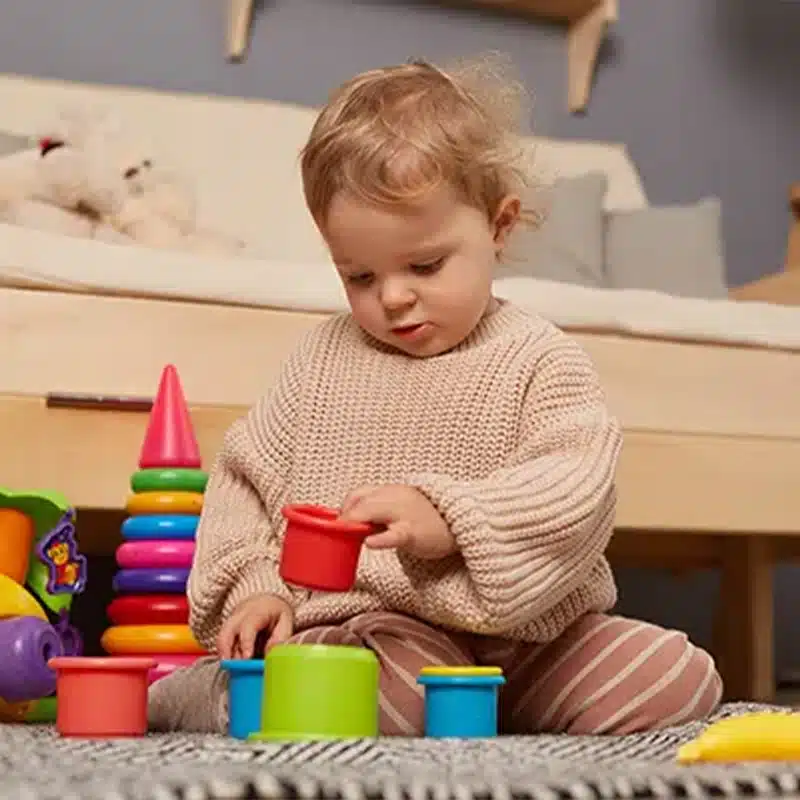
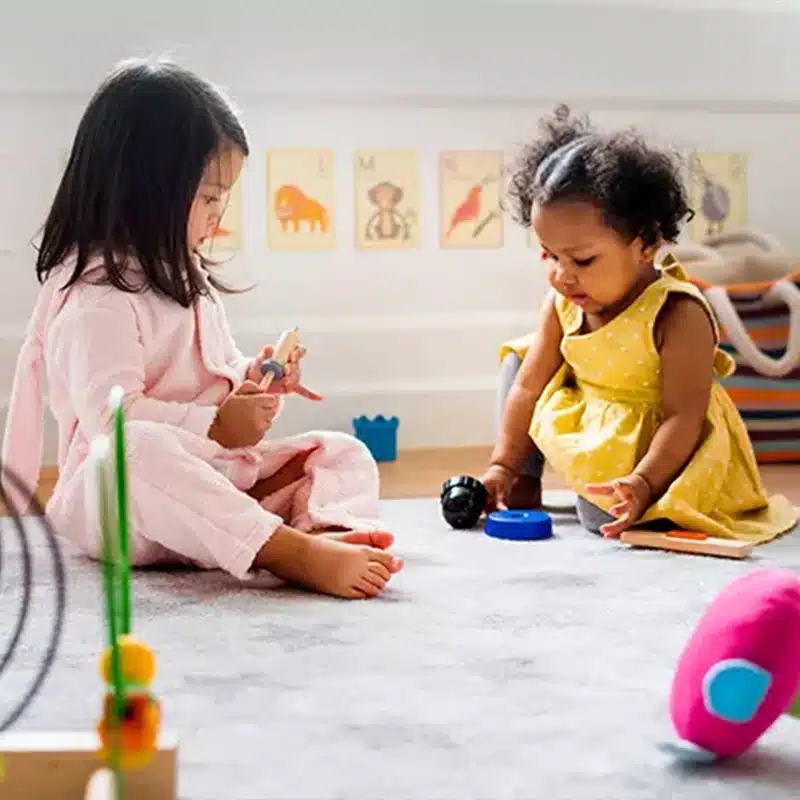
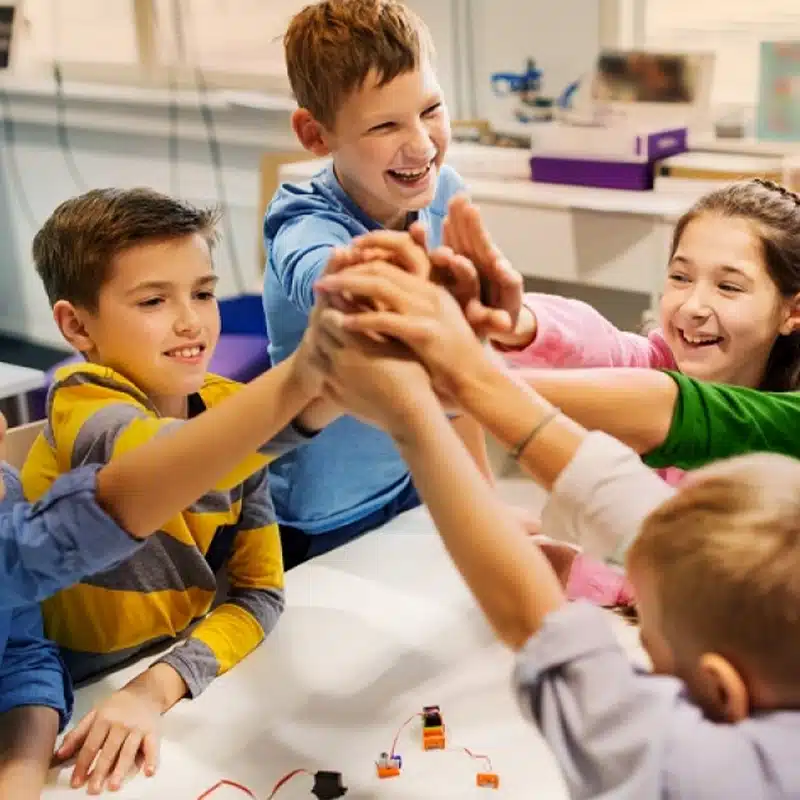
The timing of these transitions can vary, and it’s important to remember that children develop at their own pace. Some may move quickly from parallel to cooperative play, while others may spend more time in each stage. The key is to provide a supportive environment that encourages the natural progression from one stage to the next, allowing the child to build confidence and social skills at their speed.
Exploring Mildred Parten’s Theory: The Stages of Social Play
Mildred Parten’s social behavior theory is foundational in understanding play development in children. Her research in the 1930s identified six distinct stages of play, each representing a different level of social interaction and cognitive complexity. These sequential stages reflect the increasing sophistication of a child’s social skills as they grow.
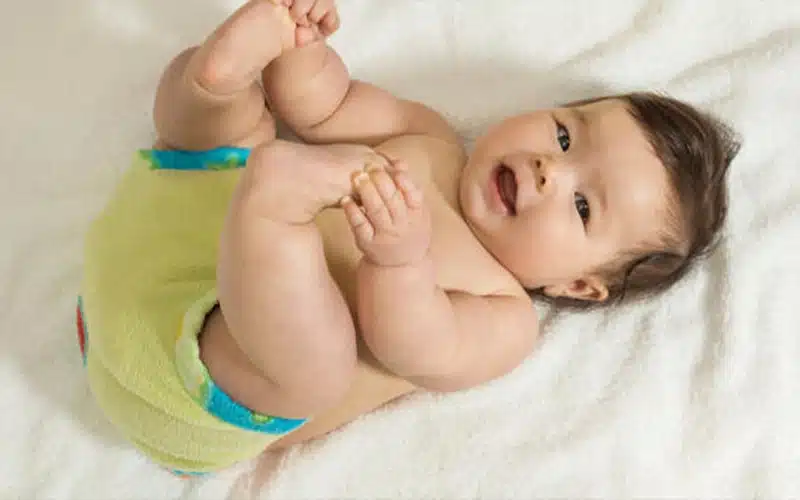
Unoccupied play:
This is the first stage where the child is not engaged in any specific activity. During unoccupied play, the child might aimlessly move around or observe their surroundings. Although this stage may seem insignificant, it is essential as it allows the child to explore their environment and begin to understand their own body and capabilities.
Solitary play:
In this stage, children play alone and are not interested in what others are doing. They focus entirely on their activities, which helps develop concentration and the ability to work independently. Solitary play is a critical phase where children learn to entertain themselves and make decisions without external influence.
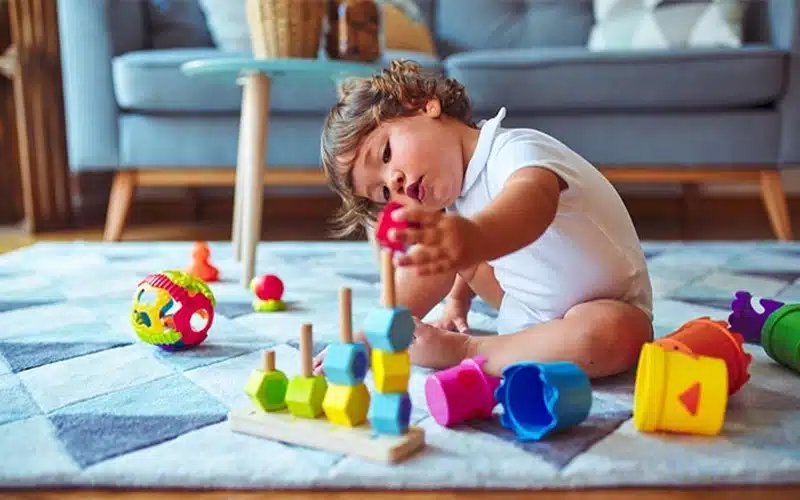
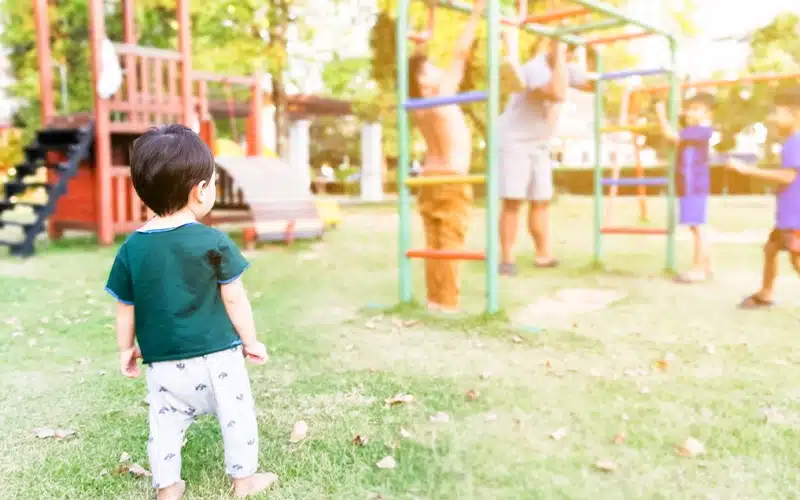
Onlooker play:
Here, the child watches others play but does not join in. This stage is crucial for social learning as the child observes how other children play, including the rules they follow and the strategies they use. Through observation, the child begins to gather information that will later inform their play behaviors.
Parallel play:
As discussed earlier, parallel play involves children playing alongside each other without direct interaction. They are aware of each other but are focused on their activities. This stage is significant because it marks the beginning of social awareness and sets the foundation for more interactive forms of play.
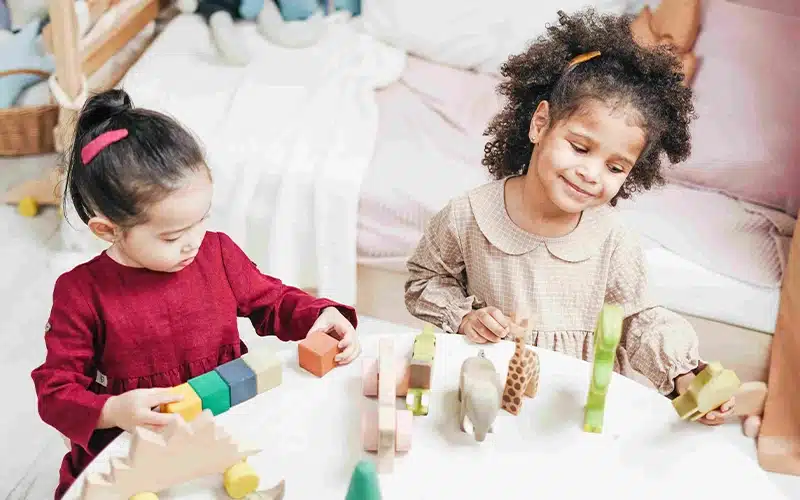
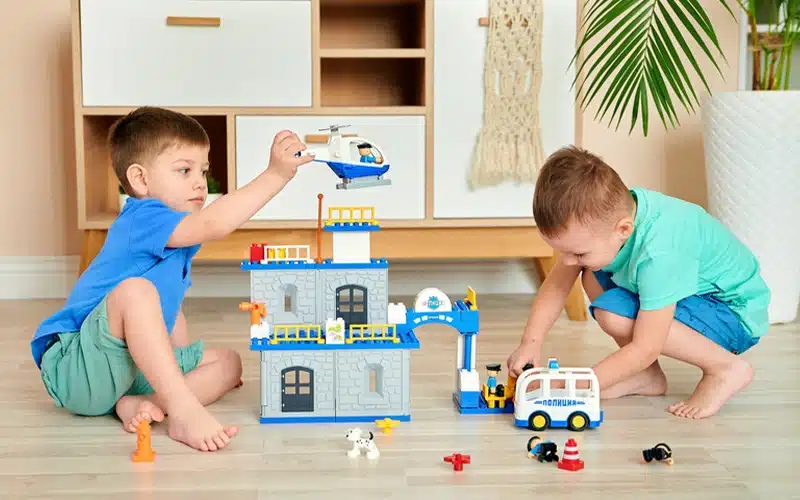
Associative play:
In associative play, children start to interact more directly. They may share toys and engage in similar activities without a common goal or structured cooperation. Associative play is often the first step towards understanding the importance of collaboration and communication in play.
Cooperative play:
The final stage involves fully developed social interactions where children work together towards a common objective. This could include playing a team game, building something together, or participating in a group activity with defined roles. Cooperative play is essential for functioning in a group setting and indicates a child’s readiness for more complex social environments.
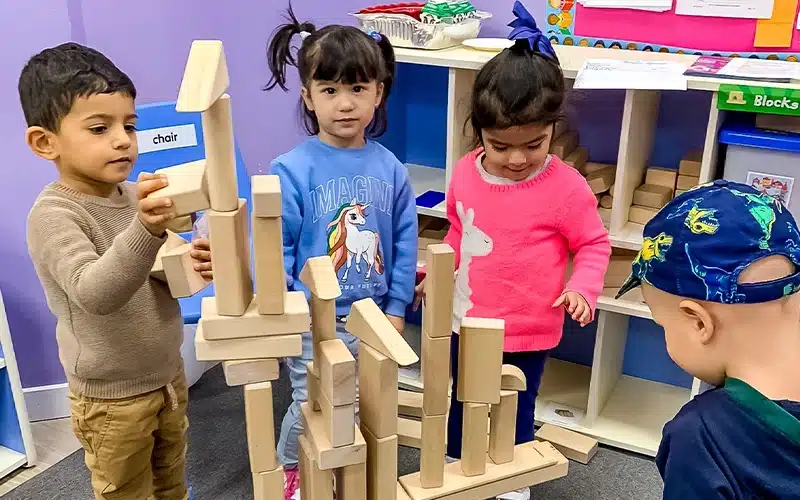
These stages are not rigid, and children may move back and forth between them as they develop. However, each stage is essential as it builds the foundation for the next, culminating in the highly social and cooperative play necessary for functioning in a group setting. Understanding these stages can help parents and educators support a child’s social development by providing appropriate activities and environments that encourage growth at each stage.
Unpacking the Benefits of Parallel Play: Why It Matters
The benefits of parallel play are numerous and play a significant role in various aspects of a child’s development. Though seemingly simple, this play stage is filled with opportunities for learning and growth that extend far beyond the act of playing itself. Let’s delve deeper into the key advantages that make parallel play an essential part of early childhood development:
- Enhances Language Acquisition: During parallel play, children are constantly exposed to language, even without directly interacting with others. This passive exposure is crucial because children learn by listening to their peers’ words, phrases, and sentences. As they absorb this language, they gradually expand their vocabulary and improve their understanding of speech patterns. The more they hear, the more they learn to communicate effectively, setting a solid foundation for future language development.
- Supports Gross and Fine Motor Skills Development: Parallel play often involves activities requiring fine and gross motor skills. For example, when children build blocks or draw, they refine their fine motor skills by manipulating small objects. At the same time, activities like running or climbing, which may occur in the same environment, help develop gross motor skills. These physical activities are essential for overall development, as they contribute to a child’s ability to control and coordinate their movements, which is critical for tasks they will encounter as they grow older.
- Sharing and Boundary Setting: Children understand sharing space and toys through parallel play. Even though they are not directly interacting, the proximity to others teaches them the importance of recognizing and respecting personal boundaries. They start to understand that while they can play independently, they need to be aware of others around them and the resources they share. This understanding is a vital social skill that will help them navigate more complex social interactions in the future.
- Lays the Groundwork for Collaboration and Sharing: Parallel play is a precursor to more collaborative forms of play. By observing and sometimes mimicking the actions of others, children begin to learn how to work together and share resources. This early exposure to cooperative behaviors is crucial, as it prepares them for future interactions where collaboration will be necessary, such as in group projects or team sports. The skills learned during parallel play, such as taking turns and sharing, are foundational for effective teamwork.
- Fosters a Sense of Independence: One of the significant benefits of parallel play is that it allows children to explore their surroundings independently while still in a social setting. This independence is crucial for building self-confidence and autonomy. Children learn to entertain themselves, make decisions, and solve problems independently, essential skills for personal growth. As they navigate their environment, they develop a stronger sense of self, which is necessary for their overall development.
- Builds Trust and Comfort in Social Settings: Being near others without the pressure of direct interaction helps children build trust in a social setting. They learn that being near others while still engaging in activities is okay. This experience is essential for developing comfort in group environments, where children need to feel secure to express themselves and participate fully. Trust is a crucial component of healthy relationships, and parallel play offers a safe space for children to start building these bonds.
These benefits highlight why parallel play is essential in early childhood development. It prepares children for more complex social interactions and supports physical, cognitive, and emotional growth. By understanding and supporting this play stage, parents and educators can help lay the groundwork for a child’s future success in various aspects of life.
Practical Tips for Supporting Parallel Play: Strategies for Success
Supporting children during the parallel play stage involves creating an environment that encourages independent exploration and social awareness. Parents and educators can help children make the most of this critical developmental stage by providing the right tools and opportunities. Here are some effective strategies to enhance and support parallel play:
- Integrate Music and Dance into Playtime: Music and dance are powerful tools for enhancing parallel play. Introducing music into the play environment can stimulate children’s creativity and encourage movement, a form of parallel play. Simple dance routines or just playing music in the background can bring children together in a shared experience without requiring them to interact directly. Dancing to a shared rhythm allows children to express themselves individually while still being part of a group, making it an ideal activity for parallel play. This shared yet independent experience reinforces the social aspects of parallel play while promoting physical development.
- Encourage Sensory Play to Stimulate the Senses: Sensory play, which involves activities that engage a child’s senses (touch, smell, sight, sound, and taste), is particularly effective during the parallel play stage. Providing materials such as sand, water, or textured toys allows children to explore different textures and sensations independently while being aware of others doing the same. Sensory activities captivate a child’s attention and promote the development of fine motor skills and cognitive abilities. For instance, playing with water or sand can help children understand cause and effect, improve hand-eye coordination, and develop problem-solving skills—all while enjoying the presence of peers without the need for direct interaction.
- Offer a Variety of Toys to Encourage Exploration: A diverse selection of toys is crucial for encouraging parallel play. Different children have different interests, so providing a range of toys that cater to various preferences can keep them engaged and help them explore new concepts. For example, offering toys like building blocks, puzzles, art supplies, and pretend play items allows children to engage in activities that interest them individually. At the same time, the variety of toys in a shared space enables children to observe and learn from each other’s play styles and choices. Exposure to different types of play can inspire new ideas and encourage creativity, all while reinforcing parallel play’s independent yet social nature.
These strategies support the natural progression of parallel play and enhance the experience by providing children with the tools to explore, learn, and grow in a supportive environment. Parents and educators can help children develop the social, cognitive, and physical skills they need for future success by fostering an atmosphere where they feel free to explore independently while still being aware of others.
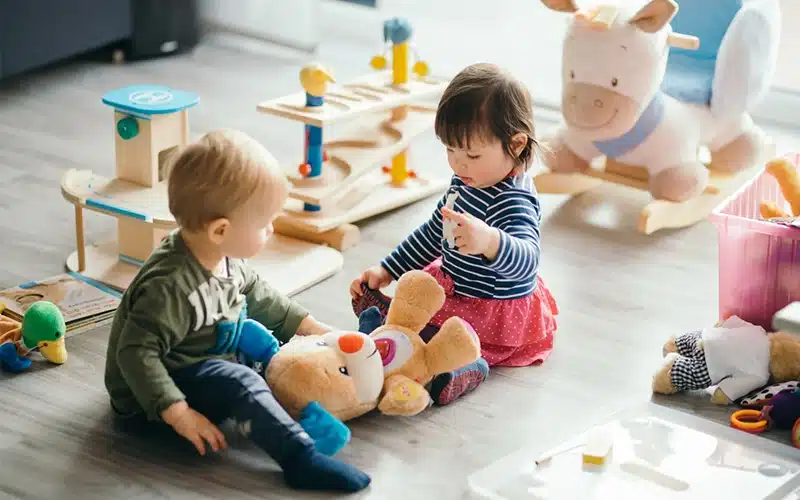
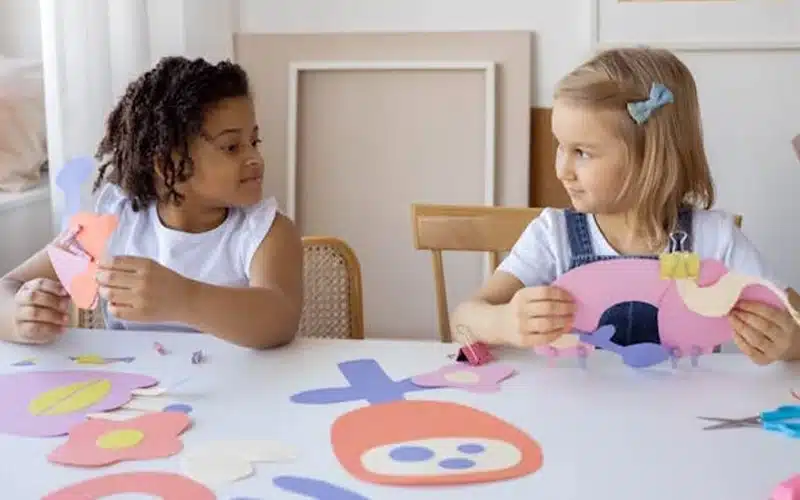
Parallel play is much more than just children playing side by side—it is a fundamental stage in early childhood development that sets the foundation for future social, cognitive, and emotional growth. From understanding language and developing motor skills to learning the importance of sharing and setting boundaries, parallel play offers numerous benefits for a child’s overall development. By recognizing and supporting this stage, parents, educators, and caregivers can provide children with the opportunities to explore, learn, and grow in a safe and enriching environment. As children transition from parallel play to more interactive forms of the game, the skills and behaviors they have acquired will become the building blocks for more complex social interactions and collaborative activities, ensuring they are well-prepared for the challenges and joys of group play and teamwork in the future.

